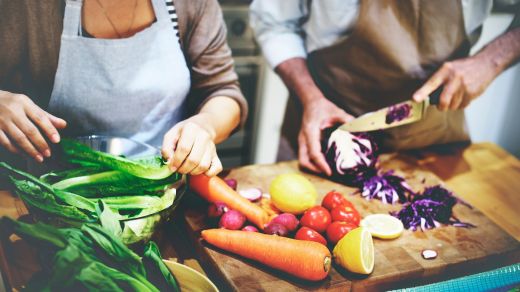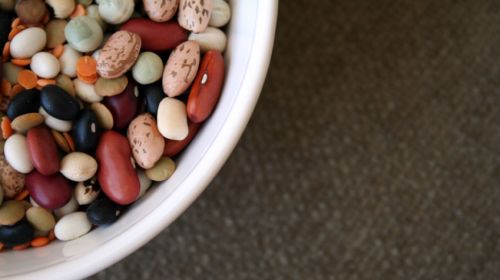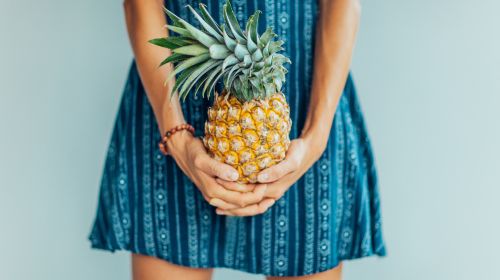Proper nutrition for diabetes is an important component of successful treatment. Special foods or diets are usually unnecessary, but various recommendations for a balanced diet are helpful.
- © Rawpixel.com – stock.adobe.com
Quick overview: Frequently asked questions and answers
What shouldn’t you eat if you have diabetes? People with diabetes mellitus should avoid sugar, refined carbohydrates such as white bread and pasta, and sugary drinks, as these can quickly increase blood sugar levels.
Which foods are good for diabetes? Suitable foods include complex carbohydrates such as whole grains, fiber-rich fruits (in moderation) and vegetables, proteins, and healthy fats such as omega-3 fatty acids.
Are potatoes good for diabetes? Potatoes can be eaten in moderation, especially when cooked with the skin on. They are best consumed with protein-rich foods and vegetables to keep blood sugar rises moderate.
At a glance:
Why is diet important for diabetes?
A suitable diet for diabetes mellitus is important so that the blood sugar level does not rise too much and can return to normal. That’s why a balanced diet is one of the pillars of diabetes therapy, alongside medications such as insulin or metformin.
There is a fundamental difference in nutrition between type 1 and type 2 diabetes:
At Type 2 diabetes Losing excess weight often plays a role. Sufficient exercise and physical activity are important here. The BMI should ideally be in the recommended range between 19 and 25. This is especially true for people with insulin resistance – in the preliminary stage, the blood sugar-lowering hormone insulin has less effect than expected.
people with Type 1 diabetes have to keep an eye on bread units (BE) or carbohydrate units (KE) in order to be able to inject the appropriate insulin dose.
Expert nutritional advice makes sense
For many people with diabetes, nutritional advice makes sense. Professional support can help you gain a better understanding of the disease and develop good self-management for changing your diet.
Individually adapting your diet to your personal needs, preferences and health conditions is a central factor for long-term success in dealing with diabetes.
The most important points for diet for diabetes
The diet for diabetes should be a healthy mix of long-chain carbohydrates, proteins and healthy fats. Basically, there are no bans – this makes it easier to maintain a healthy diet. If the most important points are observed, exceptions can also be made. A daily plan can help you keep track of the food you eat in everyday life.
The most important points are:
carbohydrates: The majority of the diet should consist of carbohydrates (about 50 percent of the total). Whole grain products containing fiber should be preferred.
fiber: About 30 grams of fiber daily is useful. Five servings of fresh fruit and vegetables daily and four servings of legumes per week are recommended. Whole grain products, nuts and seeds also contain plenty of fiber.
Sugar: Table sugar, fructose and similar types of sugar should be eaten rarely and only in small quantities. The combination with fiber is also ideal here, as the sugar then enters the blood more slowly (for example wholemeal rolls with jam).
milk and milkproducts: Yoghurt, milk, quark, cheese, buttermilk and kefir can be eaten daily and bring variety to the diet if you have diabetes.
Meat: No more than 300 grams per week. Low-fat meats such as poultry should be preferred. Only eat fatty sausages, bacon, butter and the like now and then.
Fish: Fish is recommended on the menu once or twice a week. When it comes to fish, fatty varieties such as eel or salmon can also end up on your plate once a week because they contain valuable unsaturated fatty acids.
Fat: 60 to 80 grams of fat per day is enough – as a rule of thumb, a maximum of one gram of fat per kilogram of body weight. Vegetable fats such as rapeseed, olive, peanut and walnut oil are preferable because they are also gentle on the blood vessels. When cooking, fat can be saved by using suitable pans or the method of preparation.
alcohol: Alcohol also increases blood sugar levels, to varying degrees depending on the type, and contains a lot of calories. Moderate consumption is fine, but the recommended amount should not be exceeded. For women this is a maximum of 10 grams of alcohol per day (equivalent to 0.25 l of beer), for men it is a maximum of 20 grams per day (0.5 l of beer).
beverages: Drinks should not contain sugar. Water and unsweetened herbal teas are ideal. The recommended drinking amount is at least 1.5 liters per day.
Good to know
Current studies indicate that a high-protein and low-carbohydrate diet may be useful for type 2 diabetes. However, this should only be done after consulting a doctor or nutritional advice.
However, people with kidney problems (beginning microalbuminuria or diabetic nephropathy) should reduce their protein intake to relieve the strain on the kidneys.
What else is there to consider?
Salt should also be consumed sparingly and not exceed an amount of six grams per day. Sweeteners or sugar substitutes such as
- cyclamate,
- saccharin,
- Acesulfame and
- Aspartame is allowed because it does not increase blood sugar.
However, caution is advised with fructose as it increases blood sugar levels and is also high in calories. It occurs naturally in fruits, which is why low-fructose fruits should be preferred. But fructose is also added to many processed foods.
If kidney damage is already present, diabetics should keep the amount of protein they consume daily low.
Glycemic index and glycemic load in diabetes
The glycemic index (GI) of foods shows how quickly they raise blood sugar levels. The glycemic load (GL) is a further development of the concept of the GI. The GL also takes into account the amount of carbohydrates contained in a serving. This can provide an even more precise assessment of how different portions of food affect blood sugar levels.
Diet for diabetes: What you need to consider
© FUNKE Digital Video
Which types of fruit are recommended for diabetes
There are big differences in the fructose content of individual types of fruit. For example, bananas and grapes contain a lot of sugar and quickly raise blood sugar. Fruits such as berries, watermelon and apricots are recommended. Apples, plums and mangoes, for example, have a medium calorie and sugar content.
The positive thing about fruit is that it contains many vitamins and minerals such as potassium and antioxidants. It should be eaten in its natural form, as the sugar enters the blood more slowly and is “cushioned” by the fiber it contains. This is not the case with smoothies, for example, because the sugar has already been broken down and enters the blood directly.
Dried fruit is not recommended as it contains a lot of sugar.
Table: Overview of types of fruit with calorie and sugar content
fruit | Calories per 100 grams | Sugar per 100 grams |
| currants | 36 kcal | 4.7g |
| Strawberries | 33 kcal | 4.9g |
| Watermelon | 30 kcal | 6g |
| blueberries | 42 kcal | 6g |
| Raspberries | 53 kcal | 6g |
| Apricots | 48 kcal | 7.8g |
| Cherries | 50 kcal | 8g |
| Honeydew melon | 34 kcal | 8g |
| Peach/Nectarine | 42 kcal | 8g |
| Orange | 47 kcal | 9g |
| kiwi | 61 kcal | 9g |
| pineapple | 50 kcal | 10g |
| Apples | 50 kcal | 10g |
| Plums | 50 kcal | 10g |
| Tangerines | 53 kcal | 11g |
| mango | 60 kcal | 12g |
| Cowardly | 63 kcal | 13g |
| pomegranate | 83 kcal | 14g |
| Lychees | 66 kcal | 15g |
| Grapes | 67 kcal | 16g |
| Persimmons | 71 kcal | 16g |
| banana | 93 kcal | 17g |
How many meals make sense?
The number of meals for type 2 diabetics should be limited to three main meals, with breakfast being the most lavish. Snacks should be avoided. This allows your metabolism to calm down and regulate your blood sugar. This also promotes fat burning.
If you have a craving for sweets, it is best to enjoy sweets immediately after a meal. At this point, the blood sugar level is already elevated, which the metabolism then regulates.
Recommendation for type 1 diabetes
For type 1 diabetics, the number of meals depends on the type of insulin therapy. When treating with insulin analogues, three meals are also recommended.
However, if normal insulin is injected, experts recommend three main meals and three snacks. This prevents large fluctuations in blood sugar levels and reduces the risk of low blood sugar (hypoglycemia).


